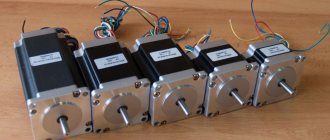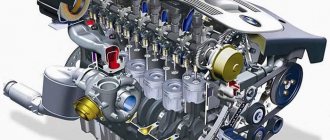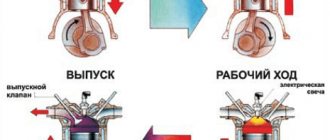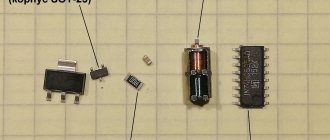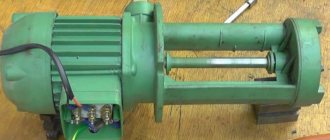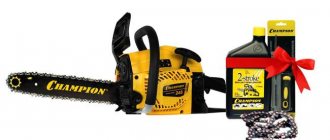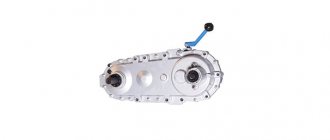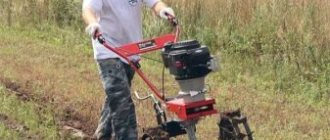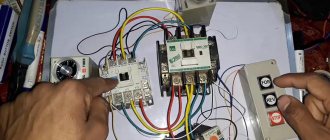Spread the love
To understand which stepper motor you need for a CNC machine, you need to know the requirements for torque and rotational speed (speed). The best stepper motor will be able to provide the required torque and still be fast enough. It is very easy to overpay for a stepper motor that is too large or choose a weak one. This guide can help you select the stepper motor you need for your CNC application.
As a CNC technician and consultant, I am often asked for stepper motor recommendations from people who want to make a CNC or replace a motor in an existing CNC.
I give them my best options depending on the stepper motor category:
- STEPPERONLINE NEMA 17 Stepper Motor
- STEPPERONLINE NEMA 23 Stepper Motor
- TOAUTO Integrated Closed-Loop NEMA 23 Stepper Motor with Driver
- Hobby-Unlimited NEMA 34 Stepper motor
Here are the best stepper motors available today [2021] for CNC applications.
| Stepper motor | Peak current | Holding torque |
| 1. Stepper motor STEPPERONLINE NEMA 17 | 2A | 84 ounces inch |
| 2. Usongshine NEMA 17 stepper motor | 1.5 A | 60 oz. |
| 3. Stepper motor STEPPERONLINE NEMA 23 | 2.8 A | 178.5 ounces inch |
| 4. Stepper motor STEPPERONLINE NEMA 23 (3A) | 3.0 A | 269 ounces to inches |
| 5. NEMA 23 4.2A high torque stepper motor | 4.2 A | 425 ounces inch |
| 6.TOAUTO NEMA 23 closed loop stepper motor | 3.0 A | 283 ounces inch |
| 7. RATTM NEMA 23 Stepper Motor Kit | 4.0 A | 425 ounces inch |
| 8. Hobby-Unlimited NEMA 34 Stepper Motor | 6.0A | 1200 oz. |
Best Stepper Motors for CNC
What are the determining criteria for selection?
We must remember that, compared to conventional motors, stepper motors require more complex control circuits. But there are not so many criteria.
- Inductance parameter.
The first step is to determine the square root of the winding inductance. We then multiply the result by 32. The value obtained as a total then needs to be compared with the voltage of the source from which the power goes to the driver.
These numbers should not differ too much from each other. The motor will heat up and make too much noise if the supply voltage is 30% or more greater than the obtained value. If it is less, then as the speed increases, the torque decreases. The higher the inductance, the easier it is to maintain high torque. But for this you need to select a driver that has a high supply voltage. Only in this case the stepper motor works normally.
- A graph of how torque and speed depend on each other.
This will allow you to understand how well the engine, in principle, meets the requirements and technical specifications.
- Geometric plan parameters.
It is recommended to pay special attention to the shaft diameter, flange and motor length.
In addition, it is also recommended to carefully study the following indicators:
- Maximum static synchronizing torque.
- Moment of inertia of the rotors.
- The current inside the phase is at nominal.
- The total phase resistance is ohmic type.
Posts 1 to 25 of 58
1 Topic by iiv9 2016-02-10 22:12:28
Topic: Stepper motor selection
Good day everyone. It's time to make the machine. At first glance, I have a simple question for professionals in this matter. What calculation is used to select a stepper motor based on power? Are there any formulas for calculations? I plan to use the machine for processing wood and plastic with a working field of 600 by 900.
2 Reply from Sergey_Slavyanskiy 2016-02-11 08:40:43
Re: Choosing a stepper motor
Good day everyone. It's time to make the machine. At first glance, I have a simple question for professionals in this matter. What calculation is used to select a stepper motor based on power? Are there any formulas for calculations? I plan to use the machine for processing wood and plastic with a working field of 600 by 900.
Naturally, each stepper motor is subject to a moment of force measured in newtons per meter (N*m). It is selected depending on the machine, you need to know the configuration and the moment of the machine can be measured using simple methods, also in Newton meters!
3 Reply from iiv9 2016-02-11 14:57:10
Re: Choosing a stepper motor
Thank you very much for your answer. I plan to make a machine according to model No. 4 (even though they don’t write anything good about it). Approximately which engines are suitable. There are many motors from old printers, but in my opinion they are rather weak.
4 Reply from cnc-master 2016-02-12 12:08:51
Re: Choosing a stepper motor
There are many motors from old printers, but in my opinion they are rather weak.
Nothing useful can happen with printer motors! Is it possible to make a burner)
5 Reply from pavel2015zp 2016-02-27 16:01:55
Re: Choosing a stepper motor
Who worked with Nema 23 steppers (3 A, 22 kg/cm)? I want to assemble a machine using such engines. How did they perform in operation, do they not heat up, do they correspond to the specified characteristics?
6 Reply from Sergey_Slavyanskiy 2016-02-28 16:28:55
Re: Choosing a stepper motor
Who worked with Nema 23 steppers (3 A, 22 kg/cm)? I want to assemble a machine using such engines. How did they perform in operation, do they not heat up, do they correspond to the specified characteristics?
7 Reply from pavel2015zp 2016-03-01 15:57:44 (modified: pavel2015zp, 2016-03-01 15:58:37)
Re: Choosing a stepper motor
Who worked with Nema 23 steppers (3 A, 22 kg/cm)? I want to assemble a machine using such engines. How did they perform in operation, do they not heat up, do they correspond to the specified characteristics?
I will work on the machine mainly with hardwood and sometimes aluminum
8 Reply from Sergey_Slavyanskiy 2016-03-02 10:27:21
Re: Choosing a stepper motor
no it won't work 23
9 Reply from oparin-ac 2016-03-16 10:25:46
Re: Choosing a stepper motor
Tell me how to determine how many N*M I need. I apologize, it’s been a long time since I studied at school, I can’t figure it out.
10 Reply from ficus 2016-04-11 14:06:17
Re: Choosing a stepper motor
A man made a machine on Nema23, here is the link forum.alexwest.ru/index.php?showtopic=13373
11 Reply from Salomonlarry 2016-04-24 14:37:21
Re: Choosing a stepper motor
Who can tell me Nema 23 3A. The working field is approximately 800×1000 mm, provided that there are two motors on the X axis. Here is the machine https://777russia.ru/forum/viewtopic.ph … kWtEtU.vk, is there enough power?
Added: 2016-04-24 14:40:36
The transmission will be a ball screw
12 Reply from Sergey_Slavyanskiy 2016-04-24 15:55:21
Re: Choosing a stepper motor
13 Reply from oldviking 2016-05-01 02:09:48
Re: Choosing a stepper motor
14 Reply from Sergey_Slavyanskiy 2016-05-01 11:04:28
About types of engines
For a machine, the type of stepper motors used is a parameter no less important than the rest. Each model has its own characteristics.
- Bipolar ones are most often used in conjunction with CNC.
The main advantage is the ability to easily select a new driver if the old one fails. At low speeds, high resistivity is maintained.
- Three-phase.
They are characterized by high speed. Relevant if this parameter is given the most attention in the event of a choice.
- Unipolar.
These are several types of bipolar motors, which differ from each other and are selected depending on the winding connection.
Stepper motor in a CNC machine: types, pros, cons, alternatives
One of the main differences between a modern CNC machine and “classical” manually controlled models is the lack of kinematic connection between the mechanisms responsible for the movement of working parts and rotation of the spindle. The separate drive allows you to abandon the use of multi-stage gearboxes, mechanical dividing heads, and entrust complex calculations to a computer. But in order for the movements to be accurate, and for the machine to always understand at what point the cutting tool is located at the current moment in time, the drive must have very specific parameters. In the mechanisms of a CNC machine, stepper motors cope best with these tasks: compact, “obedient” to control and relatively inexpensive.
In this article we will talk about the operation of these devices, try to find their shortcomings and select alternative options.
Regarding resonance at mid frequencies
Stepper motors are associated with the occurrence of strong resonance. Essentially, they work like a pendulum with a weight suspended from a spring. The role of the load is played by the rotor, and the field with magnetic energy is played by the spring. Natural vibrations have a frequency determined by two indicators:
- Rotor inertia.
- Current strength.
Resonance appears when the difference between the speed and phase of the torque reaches 180 degrees. This means that there is a correspondence between speed and changes within the magnetic field. The movement becomes fast when positioning on a new step. Torque drops because more energy is needed to overcome inertia.
Alternative options
The only competitor to a stepper motor in a CNC machine is a servomotor. Its installation requires the implementation of a more complex control circuit with feedback (encoder). It also has other disadvantages. The choice between a servo drive and a stepper motor for a CNC machine raises many questions among novice machine operators and debates on forums. To determine the optimal drive composition, the following factors must be taken into account:
- Price.
With strict budget restrictions, there is no wide choice in principle, and it is believed that a stepper motor is much cheaper than a servomotor. But this is true for small devices. The more power, the smaller the difference in price, and for some large models the cost of both types of motors is comparable. - Weight and dimensions characteristics of the machine.
The larger the machine, the more power is needed to move the working parts. The tendency to resonance phenomena is more pronounced in powerful stepper motors, which can lead to missed steps and reduced processing accuracy. For CNC milling machines, it is recommended to choose servo motors if the weight of the portal exceeds 50 kg. - Difficulty setting up.
Feedback drive circuits require precise adjustment and highly skilled operator. If you want the simplest solution, a stepper motor is the best choice for your CNC machine. - Possibility of overload and jamming.
It is believed that if the servomotor becomes jammed, it will definitely fail. This is not entirely true. If the machine is configured correctly, the driver will not send a signal to re-execute the movement, program execution will stop, and the rack will go into standby mode until the operator or adjuster intervenes. Stepper motors may skip several steps when overloaded. Due to the lack of feedback, the control system will not know about this and will continue to count down the steps further. Skipping several steps during a short-term jamming is a defective part at the output. Loss of steps is also possible due to external vibrations and impacts. - Movement speed.
In massive CNC machines with stepper motors, the gantry speed usually does not exceed 9 m/min. If the workpiece material and cutting tool allow you to assign a processing mode at higher speeds, then the motor will be a bottleneck that limits productivity. The same portal driven by a servomotor of a similar size can reach speeds of up to 60 m/min. - Working accelerations.
Overclocking the stepper motor will inevitably cause skipping steps. If you plan to work at high accelerations, it is better to choose a servomotor. - Load on the transmission at the moment of stopping.
In heavy CNC machines, stepper motors are often installed on the vertical movement mechanisms of the spindle. The rotor is braked by magnetic forces after stopping. The servo drive oscillates when stopped, which is very undesirable. The stepper motor behaves well in mechanisms for rotating the workpiece (4th axis), when it is required to hold it in a stationary position.
About encoders and drivers, connections
Special drivers are needed to control the device. They connect to LTP ports on personal computers. The program generates signals, which are then received by the drivers. After which the engine receives certain commands. Supplying current to the windings allows you to organize the operation of the entire device. The software makes it easier to control:
- According to motor size.
- For speed.
- Along trajectories.
The driver is a block responsible for controlling the entire engine. The control signal is generated with the participation of a special controller. Which involves connecting four terminals of the stepper motor to the device at once. Energy, negative and positive, comes from the power supply, and it is connected to the motors for further operation.
From the PU controller, signals go to the driver. Next, control of the process is organized, during which the switches that make up the circuit with the supply voltage are switched. The latter goes from the power supply to the engine, passing through the keys.
What else to consider?
A center tap is called a regular wire. They also use the notation “. Some stepper motor models are equipped with similar devices. Each winding comes with three wires when it comes to unipolar options. Two of them organize a connection with transistors. The center tap or middle one goes straight to the power source or voltage.
The two side wires can be completely ignored if transistors are not planned to be used.
Five- and six-wire models are similar in many ways. But inside, the central wires are led out into one common cable, along with the other components. The windings cannot be connected to each other if there are no breaks. It is best to connect the middle wire with other conductors. Then you won’t have to worry about the effectiveness and safety of the device. You just need to take the appropriate parts.
